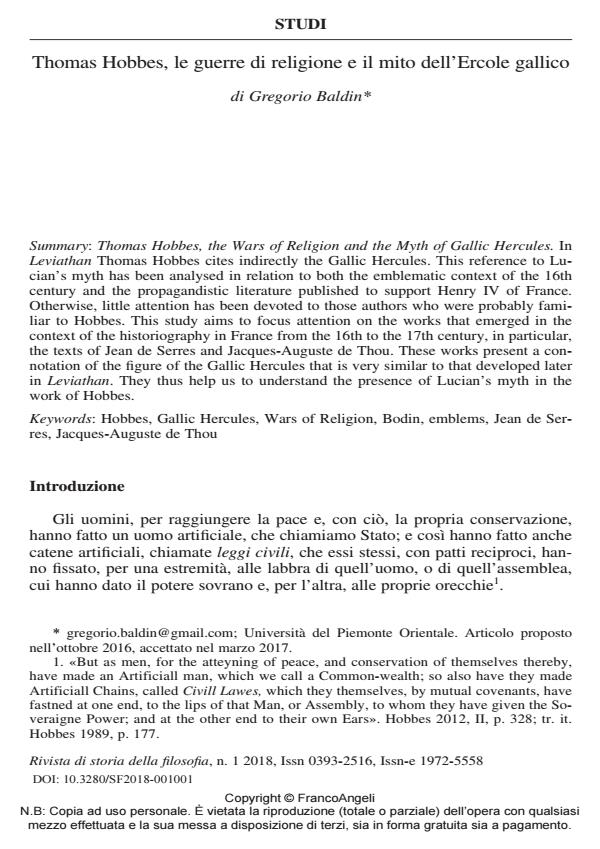Thomas Hobbes, le guerre di religione e il mito dell’Ercole gallico
Journal title RIVISTA DI STORIA DELLA FILOSOFIA
Author/s Gregorio Baldin
Publishing Year 2018 Issue 2018/1
Language Italian Pages 28 P. 1-28 File size 368 KB
DOI 10.3280/SF2018-001001
DOI is like a bar code for intellectual property: to have more infomation
click here
Below, you can see the article first page
If you want to buy this article in PDF format, you can do it, following the instructions to buy download credits

FrancoAngeli is member of Publishers International Linking Association, Inc (PILA), a not-for-profit association which run the CrossRef service enabling links to and from online scholarly content.
Thomas Hobbes, the Wars of Religion and the Myth of Gallic Hercules. In Leviathan Thomas Hobbes cites indirectly the Gallic Hercules. This reference to Lucian’s myth has been analysed in relation to both the emblematic context of the 16th century and the propagandistic literature published to support Henry IV of France. Otherwise, little attention has been devoted to those authors who were probably familiar to Hobbes. This study aims to focus attention on the works that emerged in the context of the historiography in France from the 16th to the 17th century, in particular, the texts of Jean de Serres and Jacques-Auguste de Thou. These works present a connotation of the figure of the Gallic Hercules that is very similar to that developed later in Leviathan. They thus help us to understand the presence of Lucian’s myth in the work of Hobbes.
Keywords: Hobbes, Gallic Hercules, Wars of Religion, Bodin, emblems, Jean de Serres, Jacques-Auguste de Thou
Gregorio Baldin, Thomas Hobbes, le guerre di religione e il mito dell’Ercole gallico in "RIVISTA DI STORIA DELLA FILOSOFIA" 1/2018, pp 1-28, DOI: 10.3280/SF2018-001001